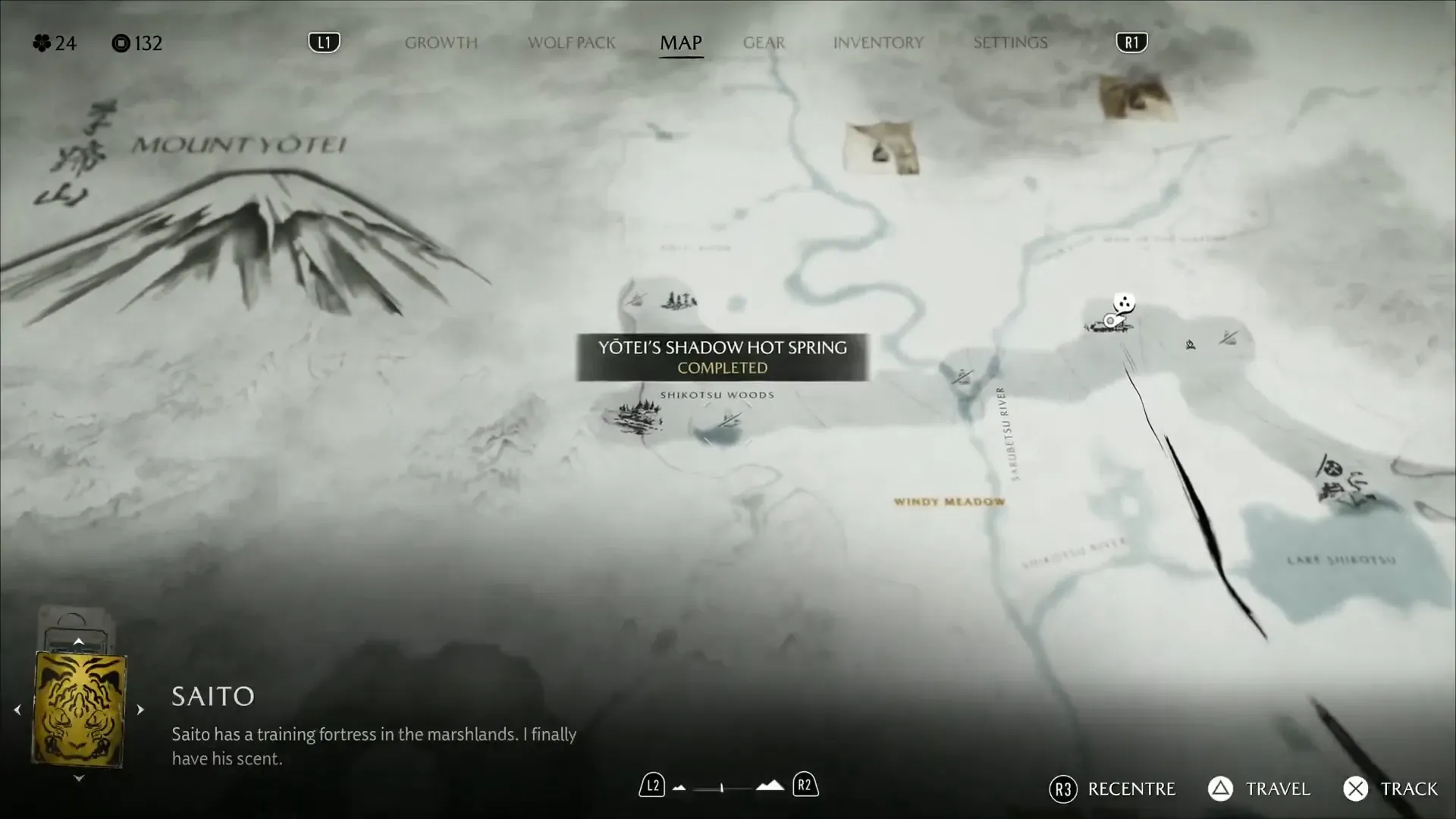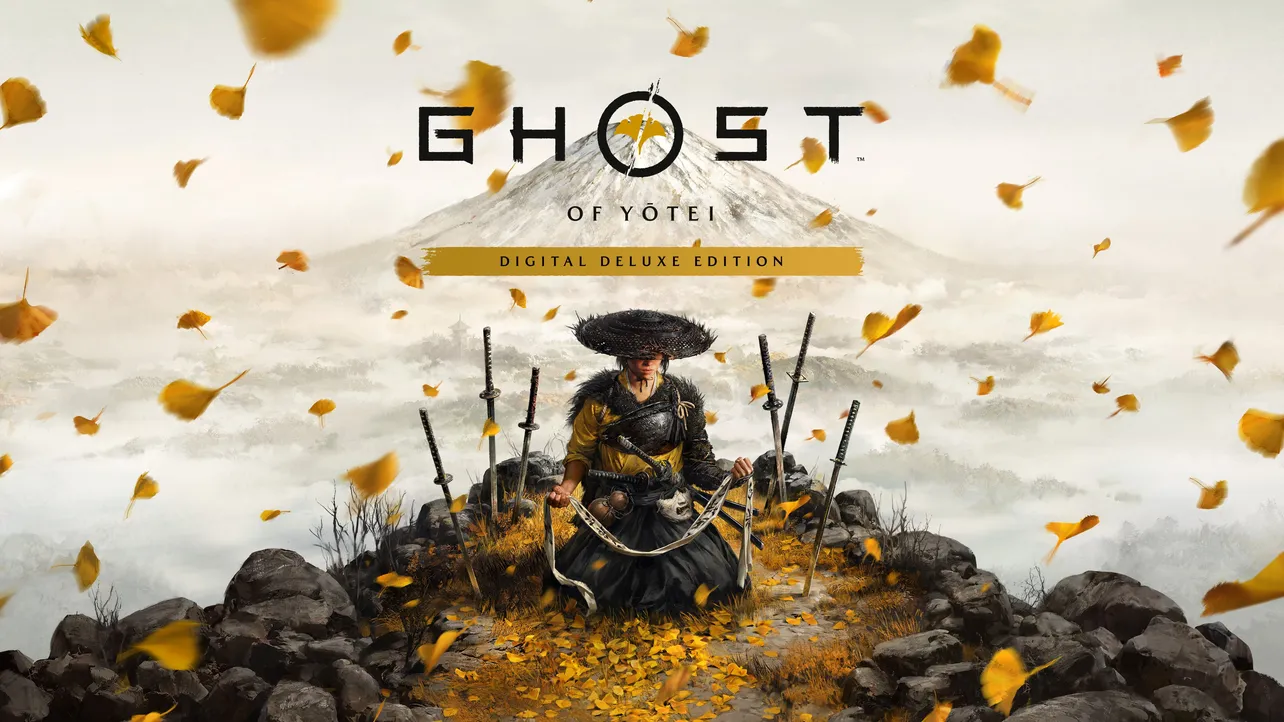Ghost of Yotei features Sucker Punch’s largest map to date, but it doesn’t dwarf Ghost of Tsushima. In practice, the explorable area is only slightly larger than Tsushima’s base game. If you factor in Tsushima’s Iki Island expansion, the two feel roughly comparable overall, with a possible slight edge to Yotei.
That balance is intentional. Rather than dramatically scale up, the sequel aims to preserve the previous game’s density while reshaping the world so it reads as grander and more expansive.
How each game’s world is structured
Both games carve their open worlds into distinct regions, but Yotei changes the composition and flow.
| Game | Map size (relative) | Region structure | Notes |
|---|---|---|---|
| Ghost of Yotei | Slightly larger than Tsushima (base) | Six regions total; two contiguous hub areas plus four partitioned zones | Designed to feel bigger than it measures via layout and sightlines |
| Ghost of Tsushima (base) | Smaller overall than Yotei | Three large regions arrayed vertically across the island | Traditional “stacked” progression from south to north |
| Tsushima + Iki Island | Roughly on par with Yotei | Three main regions plus a separate DLC island | Total explorable area feels similar to Yotei |
In Yotei, the island of Ezo (modern Hokkaido) is divided into six named regions:
- Yotei Grasslands (contiguous)
- Tokachi Range (contiguous)
- Nayoro Wilds (partitioned, smallest of the four outer regions)
- Teshio Ridge (partitioned)
- Ishikari Plain (partitioned)
- Oshima Coast (partitioned)
The two contiguous regions link seamlessly to form a wide hub. The four outer regions sit beyond narrow passes or chokepoints and are separated by a brief transition, but loads are near-instant.

Why Ezo reads as huge even if the numbers are close
Hokkaido is vastly larger than Tsushima in real life, and the game leans on that context. Open the map in Yotei and you can’t see its full breadth in one screen. You’ll also see a large portion of Hokkaido’s landmass represented, even though only a significant slice is playable. The result is a consistent sense that you’re moving across a massive territory.
Three specific choices drive that impression:
- Spread-out topology: Yotei’s regions are not stacked tightly on top of each other. Even when traveling between the two contiguous zones, you route through a river valley. Reaching the four outer regions means threading similar bottlenecks. That spacing makes journeys feel long without turning them into slogs.
- Background geography: Beyond the playable boundary you’ll catch valleys, forests, and mountain ranges that sell the idea of a much larger landmass. They don’t add measurable area, but they add perceived scale.
- Anchoring sightlines: Mount Yotei looms large early on, then recedes or vanishes from view in other regions. That shifting presence gives you a visceral sense of distance traveled.
Put together, Yotei often feels significantly bigger than it measures, which is the point.
Travel flow and density
Tsushima’s three main regions are individually larger than Yotei’s partitioned zones. In Yotei, each of the four outer regions tends to feel tighter, while the two central hubs supply the breadth. The tradeoff keeps activities and points of interest close enough to maintain momentum without stacking them in a straight north–south corridor.
Two practical effects you’ll notice while playing:
- Continuous hub riding: You can move freely across Yotei Grasslands and Tokachi Range without any transitions, which makes ride-outs and detours feel natural and uninterrupted.
- Quick, gated spokes: The four outer regions sit at the end of clearly defined routes. Entering them involves a short transition, after which you’re in a focused play space that’s easier to read and clear.
Note: The game doesn’t surface distance markers or a grid, so there’s no precise in-game measurement to quote. The comparison above reflects how the footprint is presented and how it plays.
So, how “big” is Yotei compared to Tsushima?
If you’re coming from the base release of Ghost of Tsushima, expect a larger total play area in Yotei. If you include Iki Island in the comparison, expect something that lands in the same ballpark, perhaps with a slight advantage to Yotei. The key difference is how that space is arranged: Yotei’s hub-and-spoke layout, smart bottlenecks, and long sightlines consistently amplify a feeling of scale without pushing travel times or spreading content too thin.
You won’t see the entire island in a single map view, you won’t traverse a one-to-one Hokkaido, and you won’t be gated through stacked biomes. Instead, you’ll move through a world that is only modestly larger on paper but built to read as monumental in motion.

